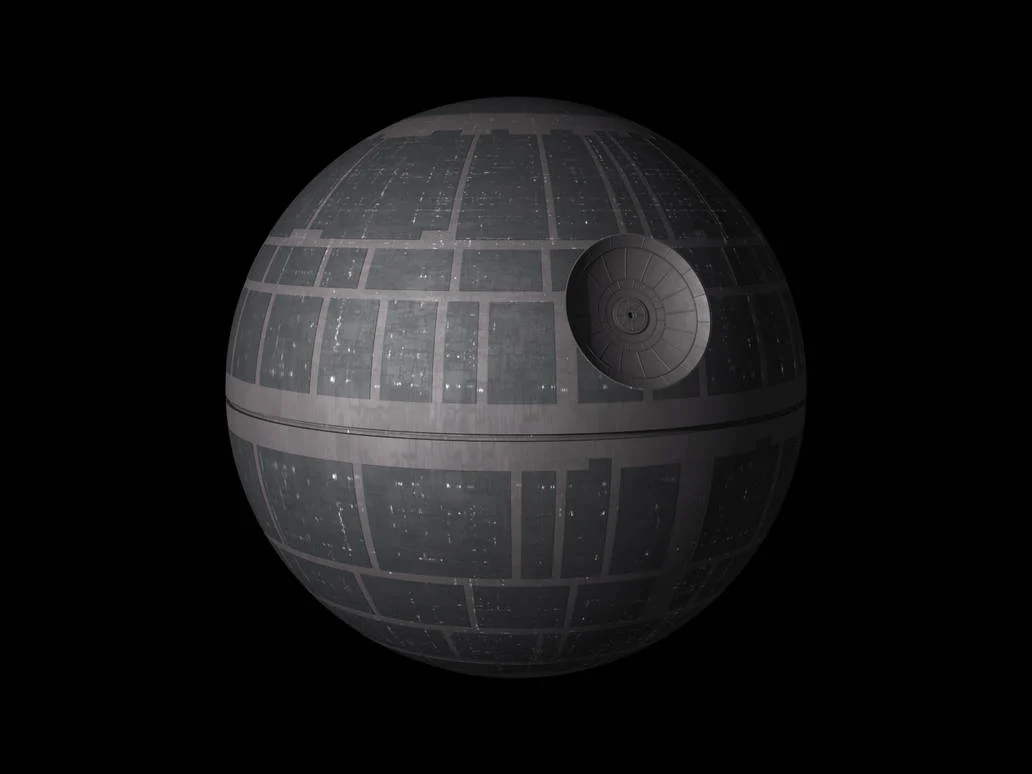If a hypothetical civilization wants to create a system that just collects energy from space, we must understand one thing. The energy collector could be a very thin iron wire that is orbiting stars or black holes. In this version, the iron wire acts as the antenna that collects energy from plasma that is around every star.
Or the civilization can use a large number of satellites that makes the virtual Dyson's sphere. Those satellites can collect energy from the star or black hole's transition disk by using solar panels. But when we think about the possibility to use black holes as an energy source, we must realize that a super civilization can put those black holes in a ball-shaped structure.
Artists impression Dyson's sphere. That collects energy from black holes. In that model, the black holes are accelerating particles through the particle accelerators. There is a possibility that those black holes must not be so-called real black holes. Electromagnetic objects with powerful magnetic fields could virtualize that effect. When particles are accelerating in the particle accelerators they pump energy to the star in the middle of the structure. And then solar panels can collect that energy from the small star. But there is a possibility that a black hole is in the ball-shaped structure and it pulls particles to the shell of that ball. So the ball collects energy from its shell or inside it is the silicone layer that collects energy from the material that falls into the black hole.
The Death Star is one version of Dyson's spheres.
When a black hole pulls material inside that ball, it collects energy from the black hole and its transition disk. If the super civilization wants to use things like gravitational energy, they can create a situation where electrons are traveling close to the black hole by using the parabolic trajectory. The black hole loads kinetic energy to those particles that send to the receiver. In some theoretical models, black holes can use as a gravitational lens that focuses energy to a certain point.
But in some visions, Dyson's sphere uses a similar structure as Death Star can use to deliver energy through the entire galaxy. The idea is that the small black hole will be closed in that structure. Then the system uses its lasers and radio telescope-looking structure by pressing the small balls into the miniature black holes. Then those black holes will be superpositioned and entangled.
So there are wormholes between those black holes, and then the civilization can send energy and information through that artificial web. This type of cosmic web will make it possible to send information to every point in the galaxy in seconds. And that thing makes these kinds of cosmic internet the most powerful control system in the universe. Sending the electrons or data through those wormholes doesn't necessarily require the existence of white holes.
When a laser ray sends energy through the wormhole the black hole will oscillate. But if a white hole exists that hypothetical system makes it possible to send things like antimatter through those wormholes. If we use Star wars language the Death Star could send antimatter particles through the hyperspace or fourth dimension through the hyperspace to its target.
The laser system of that futuristic station could use laser-accelerated electrons or protons that could turn into small black holes to eliminate the targets. There is a possibility that the hypothetical super-civilization has Death Stars. Those planet killers are important tools for destroying the rogue planets that could threaten solar systems.
https://bigthink.com/13-8/black-holes-dyson-spheres/





No comments:
Post a Comment
Note: Only a member of this blog may post a comment.